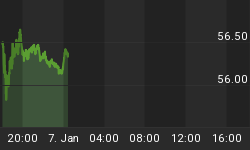The FOMC had its first meeting under the helm of Ben Bernanke. Bernanke has been a proponent of the Federal Reserve offering more transparency and investors anticipated the Fed to be more foretelling and signal that they were done or they envisioned only one more rate hike. Instead, investors got an almost carbon copy of the previous statement. The policy paragraph was exactly the same as the January meeting, which caused investors to realize that uncertainty remains on when and what level the Fed stops. Fed fund futures for the out months jumped to account for about a 50% probability of fed funds hitting 5.25% by the October meeting. Bernanke did provide additional commentary to the economic situation. The most notable change in the press release announcing the rate increase was the added detail describing the economic outlook.
Higher rates have not soured the mood of consumers. The Conference Board reported that consumer confidence rose 5.5 points to 107.2, the highest since June 2002. Consumers were more optimistic about the current status of the economy along with their expectations. A brighter outlook for the labor market helped boost the optimism of the present situation three points to 133.3, the highest since August 2001. The percent of consumers that viewed jobs as plentiful rose a point to 28.4%, the highest since August 2001. The recent economic data has depicted a slowing housing market, so it was interesting that the number of people planning on buying a house has risen from 3% to 4% over the past two months.
The Richmond Fed survey also showed continued economic strength. The index measuring the manufacturing activity in the central Atlantic region shot up 21 points to 21. This was the highest since March 2004. Capacity utilization rose from -2 to 21, the highest since the survey started in March 2002. Number of employees also rose to an all-time high. The Richmond Fed also conducts a survey of service sector businesses. It was much weaker than the manufacturing survey. The index tracking service sector revenues dropped three points to six, while number of employees fell 12 points to -3.
The first quarter will come to a close on Friday. Analysts are expecting earnings to increase 11.3%. The biggest revision has been in the consumer discretionary sector. Earnings growth estimates for the first quarter have been cut in half since the beginning of the year, from 15% to 7%. This week, First Call looked into what has caused this large revision. There have been a total of 88 estimate revisions for a net reduction of $900 million. There were 52 downward revisions for a total of $1.2 billion and just three companies account for over one-third of the downward revision.
| Company | Revision |
| Federated Dept. | -$204 million |
| General Motors | -$158 million |
| Comcast | -$109 million |
| Total | -$471 million |
Tiffany & Co. reported fourth quarter results that were significantly better than analysts predicted. While U.S. sales were lower than analysts expected, sales in Japan were much better than expected. U.S. same store sales increased 5% and increased 7% in Japan - the best results in five years. U.S. same store sales were strongest in December and weakened in January. It noted that sales at its flagship New York City store dropped 2% during the fourth quarter. The company cited lower tourism for the lackluster results. The company said that sales of jewelry costing $50,000 or more performed the best.
Richard Bernstein, strategist at Merrill Lynch, wrote a note this week discussing how correlation between asset classes has increased over the past six years. The one exception is bonds have become negatively correlated with the S&P 500.
| 5-Year Correlations | 2/28/2000 | 2/28/2006 |
| T-Bills | 34% | -58% |
| Long-term Treasuries | 37% | -54% |
| Goldman Commodity Index | -14% | 33% |
| Russell 2000 | 62% | 94% |
| MSCI EAFE | 32% | 96% |
| Hedge Funds | 35% | 96% |
Additionally, Stocks have also become more correlated with the overall market. All but one of the ten S&P sectors has a higher correlation with the overall market than six years ago.
| 5-Year Correlations | 2/28/2000 | 2/28/2006 |
| Staples | 53% | 40% |
| Utilities | 34% | 75% |
| Energy | 59% | 76% |
| Materials | 61% | 76% |
| Healthcare | 55% | 77% |
| Financials | 82% | 84% |
| Telecom | 33% | 89% |
| Industrials | 82% | 92% |
| Discretionary | 55% | 93% |
| Technology | 38% | 94% |
This is evidence that the market has become a large "macro bet." If investors fail to understand the greater degree of correlation and the market is in fact one large macro bet, it is likely that investors will experience larger losses if the market undergoes a major correction as diversification does not provide the assumed benefits.















